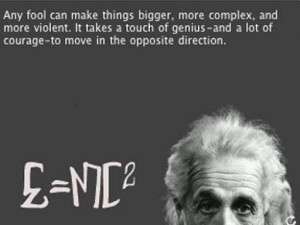 User-Friendly Design
User-Friendly Design
A quick glance at most websites is enough to date them. Just as the text-heavy, vertical page design of the early web is fairly easy to spot, so the distinguishing features and characteristics of Web 2.0 are often apparent right at first glance. At gen2oh, we strive for clean layout, user-friendly tools, and logical navigation.
This isn’t an encyclopedia. While you may find in-depth content, numerous resources, or complex issues highlighted on this site, we hope you’ll find the presentation clean, clear, and logical. We know how much information is out there. We also know that Net Geners have become virtual experts at sorting and selecting the important bits. Navigating the World Wide Web of information is a challenge. At gen2oh, we hope to make it easier.
 Direct Language
Direct Language
We’re not Chaucer. Since Net Geners can get the full scoop on social circles or current events through venues like Twitter or Facebook or headline news feeds, we understand that patience might be lacking for navigating obscure language or text-heavy posts.
If language itself is evolving, then the language we use to connect with one another must also evolve. If we are to reach out, we better not beat around the bush. Instead, let’s use simple, transparent language to convey and share information.
Challenge
gen2oh does not pander to youth or dumb down complex concepts. We are living in the midst of a major transformation of society. We know Net Geners are eager to be challenged. We must talk about big problems. We must use real tools. We must make valuable interdisciplinary connections, interact and collaborate with one another, and find real solutions.
Relevance
We are not living in a stagnant age. Things as we know them are shifting all around us. Political systems are breaking down and changing. Economics are transforming, the workplace is evolving, and the methods and means by which people communicate and create are very different than they were just two decades ago. The world has real problems. Today’s youth are willing activists. Gen2oh.net aims to foster real-world relevance in this modern learning environment. We won’t ask you to memorize facts and figures just for the sake of remembering them. Instead, we want to talk about the real reasons to learn, the real problems out there that need solving. Let’s take our knowledge and use it to actually improve the world we live in.
References
Bartels, L. (2008, November 12). Neuroplasticity and the Brain that Changes Itself. Retrieved September 10, 2011, from Sharp Brains: http://www.sharpbrains.com/blog/2008/11/12/neuroplasticity-and-the-brain-that-changes-itself/
Bloom’s Taxonomy. (n.d.). Retrieved September 1, 2011, from Old Dominion University: http://www.odu.edu/educ/roverbau/Bloom/blooms_taxonomy.htm
Curwood, J. S. (n.d.). Wired Up, Tuned Out. Retrieved September 1, 2011, from Scholastic, Inc.: http://www2.scholastic.com/browse/article.jsp?id=3752302
Tapscott, D. (2009). Grown Up Digital. New York: McGraw Hill.
